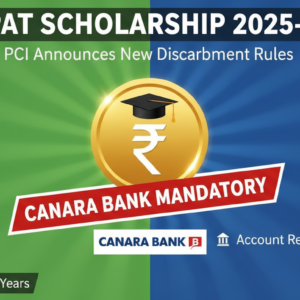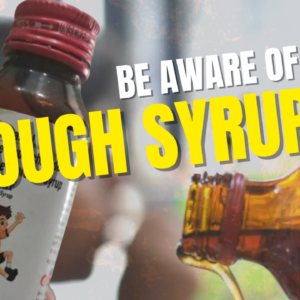[the_ad id=”9653″]
Are you preparing for the Gujarat Public Service Commission (GPSC) Drug Inspector exam? Look no further! Our comprehensive guide on the GPSC Drug Inspector syllabus and exam pattern is now available on the Pharmacy India website. Whether you’re a pharmacy graduate aiming to secure a prestigious government job or a seasoned professional looking to advance your career, this detailed resource will help you navigate the exam preparation with ease. Check it out now to ensure you’re fully prepared for every aspect of the GPSC Drug Inspector examination.
Exam Pattern for GPSC Drug Inspector
| Part 1 | General Studies | 100 Marks |
| Part 2 | Pharmaceutical Science | 200 Marks |
Syllabus for Preliminary Test for GPSC Drug Inspector
Part-1 (General Studies)
Medium: Gujarati and English
Total Marks: 100
- Geography of India – Geographical, Economic, Social, Natural Resources and
- Population related topics – With Special reference to Gujarat
- Cultural Heritage of India – Literature, Arts, Religion and Architecture- With Special reference to Gujarat
- History of India- With Special reference to Gujarat
- Indian Economy and Planning
- Indian Politics and Constitution of India:
(1) Preamble
(2) Fundamental Rights and Fundamental Duties
(3) Directive Principals of State Policy
(4) Composition of Parliament
(5) Powers of the President of India
(6) Powers of Governor
(7) Judiciary
(8) Provisions for Scheduled Casts, Scheduled Tribes and Backward Classes of the society
(9) NITI Aayog
(10) Constitutional and Statutory Bodies: Election Commission of India, Comptroller and Auditor General, Information Commission
[the_ad id=”9009″]
- General Science, Environment and Information & Communication Technology
Daily events of Regional, National and International Impotance including Sports - General Mental Ability Test
(1) Logical Reasoning and Analytical Ability
(2) Number Series, Coding-Decoding
(3) Questions about relationship.
(4) Shapes and their Sub-sections, Venn Diagram
(5) Questions based on Clock, Calendar and Age
(6) Number system and order of Magnitude
(7) Linear Equations – in one or two Variables
(8) Ratio, Proportion and Variation
(9) Average of Mean, Median, Mode- including weighted Mean
(10) Power and Exponent, Square, Square Root, Cube Root, H.C.F. & L.C.M.
(11) Percentage, Simple and Compound Interest, Profit and Loss
(12) Time and Work, Time and Distance, Speed and Distance
(13) Area and Perimeter of Simple Geometrical Shapes, Volume and Surface Area of Sphere, Cone, Cylinder, Cubes and Cuboids
(14) Lines, Angles and Common geometrical figures – properties of transverse or parallel lines, properties related to measure sides of a triangle, Pythagoras theorem, quadrilateral, rectangle, Parallelogram and rhombus.
(15) Introduction to algebra-BODMAS, simplification of weird Symbols.
(16) Data interpretation, Data Analysis, Data sufficiency, Probability
[the_ad id=”9009″]
- Gujarati Grammar
(૩) જોણથૂ
(૪) ઼રીફીધીર્-ુષòધ્પીધીર્ સબ્ન્
(૫) òિતËલ્ઙ્ ઇફૉગઽૉષદ્
(૬) ઼રી઼
(૭) ઼અુપ
(૮) ઇવઅગીળ
(૯) ઝઅ - English Grammar
(1) Articles, Pronouns, Adjectives, Prepositions, Conjunctions and Question tag.
(2) Verb and Tense, Agreement between subject and verb, Gerund, Participles.
(3) Modal auxiliaries. Usage of can, may, could, should, etc.
(4) Use of some, many, any, few, a little, Since and for.
(5) Active and passive voice
(6) Degrees of adjectives.
(7) Common errors of usage.
[the_ad id=”9009″]
Part-2 (Concerned Subject) Pharmaceutical Science
Total questions: 200
Medium: English
Total Marks: 200
1. HUMAN ANATOMY AND PHYSIOLOGY
Introduction to human body, Cellular level of organization, Tissue level of organization, Integumentary system, Skeletal system, Joints, Body fluids and blood, Lymphatic system, Peripheral nervous system, Special senses, Cardiovascular system, Nervous system, Digestive system, Energetics, Respiratory system, Urinary system, Endocrine system, Reproductive system, Introduction to genetics.
2. PHARMACEUTICS
Historical background and development of profession of pharmacy, Dosage forms, Prescription, Posology, Pharmaceutical calculations, Powders, Liquid dosage forms, Monophasic liquids, Biphasic liquids, Suspensions, Emulsions, Suppositories, Pharmaceutical incompatibilities, Semisolid dosage forms.
[the_ad id=”9009″]
3. PHARMACEUTICAL INORGANIC CHEMISTRY
Impurities in pharmaceutical substances; Acids, Bases and Buffers; Major extra and intracellular electrolytes, Dental products, Gastrointestinal agents, Miscellaneous
compounds, Radiopharmaceuticals.
4. PHARMACEUTICAL ORGANIC CHEMISTRY
Classification, nomenclature and isomerism; Alkanes, Alkenes and Conjugated dienes; Alkyl halides, Alcohols, Carbonyl compounds, Carboxylic acids, Aliphatic amines, Benzene and its derivatives, Phenols, Aromatic Amines, Aromatic Acids, Fats and Oils, Polynuclear hydrocarbons, Cyclo alkanes, Stereo isomerism, Optical isomerism, Geometrical isomerism, Heterocyclic compounds.
5. BIOCHEMISTRY
Biomolecules, Bioenergetics, Carbohydrate metabolism, Biological oxidation, Lipid metabolism, Amino acid metabolism, Nucleic acid metabolism and genetic information transfer, Enzymes
6. PATHOPHYSIOLOGY
Basic principles of Cell injury and Adaptation, Basic mechanism involved in the process of inflammation and repair, Cardiovascular System, Respiratory system, Renal system, Haematological Diseases, Endocrine system, Nervous system, Gastrointestinal system, inflammatory bowel diseases, jaundice, hepatitis (A,B,C,D,E,F) alcoholic liver disease, Disease of bones and joints, Principles of cancer, Diseases of bones and joints, Principles of Cancer, Infectious diseases, Sexually transmitted diseases.
[the_ad id=”9009″]
7. PHYSICAL PHARMACEUTICS
Solubility of drugs, States of Matter and properties of matter, Physicochemical properties of drug molecules, Surface and interfacial phenomenon, Complexation and protein binding, pH, buffers and Isotonic solutions, Colloidal dispersions, Rheology, Deformation of solids, Coarse dispersion, Micromeretics, Drug stability.
8. PHARMACEUTICAL MICROBIOLOGY
- Introduction, history of microbiology, its branches, scope and its importance, Introduction to Prokaryotes and Eukaryotes, Study of ultra-structure and morphological classification of bacteria, nutritional requirements, raw materials used for culture media and physical parameters for growth, growth curve, isolation and preservation methods for pure cultures, cultivation of anaerobes, quantitative measurement of bacterial growth (total & viable count). Study of different types of phase constrast microscopy, dark field microscopy and electron microscopy. Identification of bacteria using staining techniques (simple, Gram’s &Acid fast staining) and biochemical tests (IMViC). Study of principle, procedure, merits, demerits and applications of physical, chemical gaseous, radiation and mechanical method of sterilization. Evaluation of the efficiency of sterilization methods. Equipments employed in large scale sterilization. Sterility indicators.
- Study of morphology, classification, reproduction/replication and cultivation of Fungi and Viruses. Classification and mode of action of disinfectants, Factors influencing disinfection, antiseptics and their evaluation. For bacteriostatic and bactericidal actions, Evaluation of bactericidal & Bacteriostatic. Sterility testing of products (solids, liquids, ophthalmic and other sterile products) according to IP, BP and USP.
- Designing of aseptic area, laminar flow equipments; study of different sources of contamination in an aseptic area and methods of prevention, clean area classification.
Principles and methods of different microbiological assay. Methods for standardization of antibiotics, vitamins and amino acids. Assessment of a new antibiotic. - Types of spoilage, factors affecting the microbial spoilage of pharmaceutical products, sources and types of microbial contaminants, assessment of microbial contamination and spoilage. Preservation of pharmaceutical products using antimicrobial agents, evaluation of microbial stability of formulations. Growth of animal cells in culture, general procedure for cell culture, Primary, established and transformed cell cultures. Application of cell cultures in pharmaceutical industry and research.
[the_ad id=”9009″]
9. PHARMACEUTICAL ENGINEERING
Flow of fluids, Size Reduction, Size Separation, Heat Transfer, Evaporation, Distillation, Drying, Mixing, Filtration, Centrifugation, Materials of pharmaceutical plant construction, Corrosion and its prevention
10. MEDICINAL CHEMISTRY
Introduction to Medicinal Chemistry, History and development of medicinal chemistry, Physicochemical properties in relation to biological action, Drug metabolism, Drugs acting on Autonomic Nervous System, Adrenergic Neurotransmitters, Sympathomimetic agents: SAR of Sympathomimetic agents, Adrenergic Antagonists, Cholinergic neurotransmitters, Parasympathomimetic agents: SAR of Parasympathomimetic agents, Direct acting agents, Indirect acting/ Cholinesterase inhibitors (Reversible & Irreversible), Cholinesterase reactivator, Cholinergic Blocking agents, Solanaceous alkaloids and analogues, Synthetic cholinergic blocking agents, Drugs acting on Central Nervous System, Antihistaminic agents, H1–antagonists, H2-antagonists, Gastric Proton pump inhibitors, Antineoplastic agents, Alkylating agents, Antimetabolites, Antibiotics, Plant products, Anti-anginal, Vasodilators, Calcium channel blockers, Diuretics, Anti-hypertensive, Agents, Anti-arrhythmic Drugs, Anti-Hyperlipidemic agents, Coagulant & Anticoagulants, Drugs used in Congestive Heart Failure, Drugs acting on Endocrine system, Sex hormones, Drugs for erectile dysfunction, Oral contraceptives, Corticosteroids, Thyroid and Anti-Thyroid drugs, Anti-Diabetic agents, Local Anesthetics, Benzoic Acid derivatives, Amino Benzoic acid derivatives, Lidocaine/Anilide derivatives, Antibiotics, β-Lactam antibiotics, Aminoglycosides, Tetracyclines, Macrolide, Prodrugs, Anti-Malarials, Quinolines, Biguanides and dihydro triazines, Anti-Tubercular Agents, Synthetic anti-Tubercular agents, AntiTubercular antibiotics, Urinary tract anti-Infective agents, Antiviral agents, Antifungal agents, Antifungal antibiotics, Synthetic Antifungal agents, Anti-Protozoal Agents, Anthelmintics, Sulphonamides and Sulfones, Folate reductase inhibitors, Introduction to Drug Design, Combinatorial Chemistry.
[the_ad id=”9009″]
11. PHARMACOLOGY
General Pharmacology, Introduction to Pharmacology, Pharmacokinetics, Pharmacodynamics, Adverse drug reactions, Drug interactions, Drug discovery and clinical evaluation of new drugs, Pharmacology of drugs acting on peripheral nervous system, Pharmacology of drugs acting on central nervous system, Pharmacology of drugs acting on cardio vascular system, Pharmacology of drugs acting on urinary system, Autocoids and related drugs, Pharmacology of drugs acting on endocrine system, Bioassay, Pharmacology of drugs acting on Respiratory system, Pharmacology of drugs acting on the Gastrointestinal Tract, Chemotherapy, Immunopharmacology, Principles of toxicology, Chronopharmacology.
12. PHARMACOGNOSY AND PHYTOCHEMISTRY
Introduction to Pharmacognosy, Classification of drugs, Quality control of Drugs of Natural Origin; Cultivation, Collection, Processing and storage of drugs of natural origin; Conservation of medicinal plants, Plant tissue culture, Pharmacognosy in various systems of medicine, Introduction to secondary metabolites, Plant Products, Primary metabolites, Carbohydrates, Proteins and Enzymes, Lipids(Waxes, fats, fixed oils), Marine Drugs, Metabolic pathways in higher plants and their determination, Alkaloids, Phenylpropanoids and Flavonoids, Steroids, Cardiac Glycosides & Triterpenoids, Volatile oils, Tannins, Resins, Glycosides, Iridoids, Other terpenoids & Naphthaquinones, Isolation, Identification and Analysis of Phytoconstituents, Basics of Phytochemistry.
[the_ad id=”9009″]
13. INDUSTRIAL PHARMACY
Preformulation Studies, Tablets, Liquid orals, Capsules, Pellets, Parenteral Products, Ophthalmic Preparations, Cosmetics, Pharmaceutical Aerosols, Packaging Materials Science, Pilot plant scale up techniques, Technology development and transfer, Regulatory affairs, Regulatory requirements for drug approval, Quality management systems, Indian Regulatory Requirements.
14. HERBAL DRUG TECHNOLOGY
Herbs as raw materials, Biodynamic Agriculture, Indian Systems of Medicine, Nutraceuticals, Herbal-Drug and Herb-Food Interactions, Herbal Cosmetics, Herbal excipients, Herbal formulations, Evaluation of Drugs, Patenting and Regulatory requirements of natural products, Regulatory Issues, General Introduction to Herbal Industry, Good Manufacturing Practice of Indian systems of medicine.
15. PHARMACEUTICAL BIOTECHNOLOGY
Introduction to Biotechnology with reference to Pharmaceutical Science, Enzyme Biotechnology. Biosensors, Protein Engineering, microbes, Enzymes, genetic engineering, Study of cloning vectors, restriction endonucleases and DNA ligase, Recombinant DNA technology, Application of r DNA technology and genetic engineering in production of (i) Interferon (ii) Vaccines- hepatitis- B (iii) HormonesInsulin, Brief introduction to PCR, Types of immunity, Structure of Immunoglobulins, Structure and Function of MHC, Hypersensitivity reactions, Immune stimulation and Immune suppressions, General method of the preparation of bacterial vaccines, toxoids, viral vaccine, antitoxins, serum-immune blood derivatives and other products relative to immunity, Storage conditions and stability of official vaccines, Hybridoma technology, Blood products and Plasma Substituties, Immuno blotting techniques, Genetic organization of Eukaryotes and Prokaryotes, Microbial genetics including transformation, transduction, conjugation, plasmids and Transposons, Introduction to Microbial biotransformation and applications, Mutation: Types of mutation/mutants, Fermentation methods and general requirements, study of media, equipment, sterilization methods, aeration process, stirring, Large scale production fermenter design and its various controls, Study of the production of – penicillins, citric acid, Vitamin B12, Glutamic acid, Griseofulvin, Blood Products.
[the_ad id=”9009″]
16. COSMETIC SCIENCE
Classification of cosmetic and cosmeceutical products, Definition of cosmetics as per Indian and EU regulations, Evolution of cosmeceuticals from cosmetics, cosmetics as quasi and OTC drugs, Cosmetic excipients, Skin, Hair, Oral Cavity, Principles of formulation and building blocks of skin care products, Antiperspants & deodorants, Principles of formulation and building blocks of Hair care products, Sun protection, Classification of Sunscreens and SPF, Role of herbs in cosmetics, Analytical cosmetics, Principles of Cosmetic Evaluation: Principles of sebumeter, corneometer. Measurement of TEWL, Skin Color, Hair tensile strength, Hair combing properties Soaps, and syndet bars. Evolution and skin benefits. Oily and dry skin, causes leading to dry skin, skin moisturisation. Basic understanding of the terms Comedogenic, dermatitis. Cosmetic problems associated with Hair and scalp: Dandruff, Hair fall causes, Cosmetic problems associated with skin: blemishes, wrinkles, acne, prickly heat and body odor. Antiperspirants and Deodorants- Actives and mechanism of action.
17. PHARMACEUTICAL JURISPRUDENCE
a) Drugs and Cosmetics Act, 1940 and its rules 1945
b) Pharmacy Act –1948:
c) Narcotic Drugs and Psychotropic substances Act-1985 and Rules
d) Study of Salient Features of Drugs and Magic Remedies Act and its rules
e) Prevention of Cruelty to animals Act-1960
f) National Pharmaceutical Pricing Authority
g) Code of Pharmaceutical ethics
h) Right to Information Act, 2005
i) Introduction to Intellectual Property Rights (IPR)
18. USE OF ARTIFICIAL INTELLIGENCE IN DRUG DISCOVERY
19. CURRENT TRENDS AND RECENT ADVANCEMENT IN THE RELEVANT FIELDS
[the_ad id=”9009″]
| Official Website | https://gpsc.gujarat.gov.in/ |
| Syllabus | Click Here |
MORE JOBS: Border Security Force (BSF) 2024 Upcoming Vacancy for ASI Pharmacist (230 Posts)
<<<<<<<<<<<<JOIN US>>>>>>>>>>>>>>>>
| Subscribe our PHARMACY INDIA Youtube Channel for more Pharma Updates | Click Here |
| Follow us on Instagram | Click Here |
| Download PHARMACY INDIA MOBILE APP from Google Play Store | Click Here |
| Follow us on LinkedIn | Click Here |
[the_ad id=”9395″]






